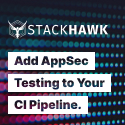MemSQL Architecture - The Fast (MVCC, InMem, LockFree, CodeGen) and Familiar (SQL)
 Tuesday, August 14, 2012 at 9:13AM
Tuesday, August 14, 2012 at 9:13AM  This is an interview with MemSQL cofounder’s Eric Frenkiel and Nikita Shamgunov, in which they try to answer critics by going into more depth about their technology.
This is an interview with MemSQL cofounder’s Eric Frenkiel and Nikita Shamgunov, in which they try to answer critics by going into more depth about their technology.
MemSQL ruffled a few feathers with their claim of being the fastest database in the world. According to their benchmarks MemSQL can execute 200K TPS on an EC2 Quadruple Extra Large and on a 64 core machine they can push 1.2 million transactions a second.
Benchmarks are always a dark mirror, so make of them what you will, but the target market for MemSQL is clear: projects looking for something both fast and familiar. Fast as in a novel design using a combination of technologies like MVCC, code generation, lock-free data structures, skip lists, and in-memory execution. Familiar as in SQL and nothing but SQL. The only interface to MemSQL is SQL.
It’s right to point out MemSQL gets a boost by being a first release. Only a limited subset of SQL is supported, neither replication or sharding are implemented yet, and writes queue in memory before flushing to disk. The next release will include a baseline distributed system, native replication, n-way joins, and subqueries. Maintaining performance as more features are added is a truer test.
And MemSQL is RAM based, so of course it’s fast, right? Even among in-memory databases MemSQL hopes to convince you they’ve made some compelling design choices. The reasoning for their design goes something like:



















